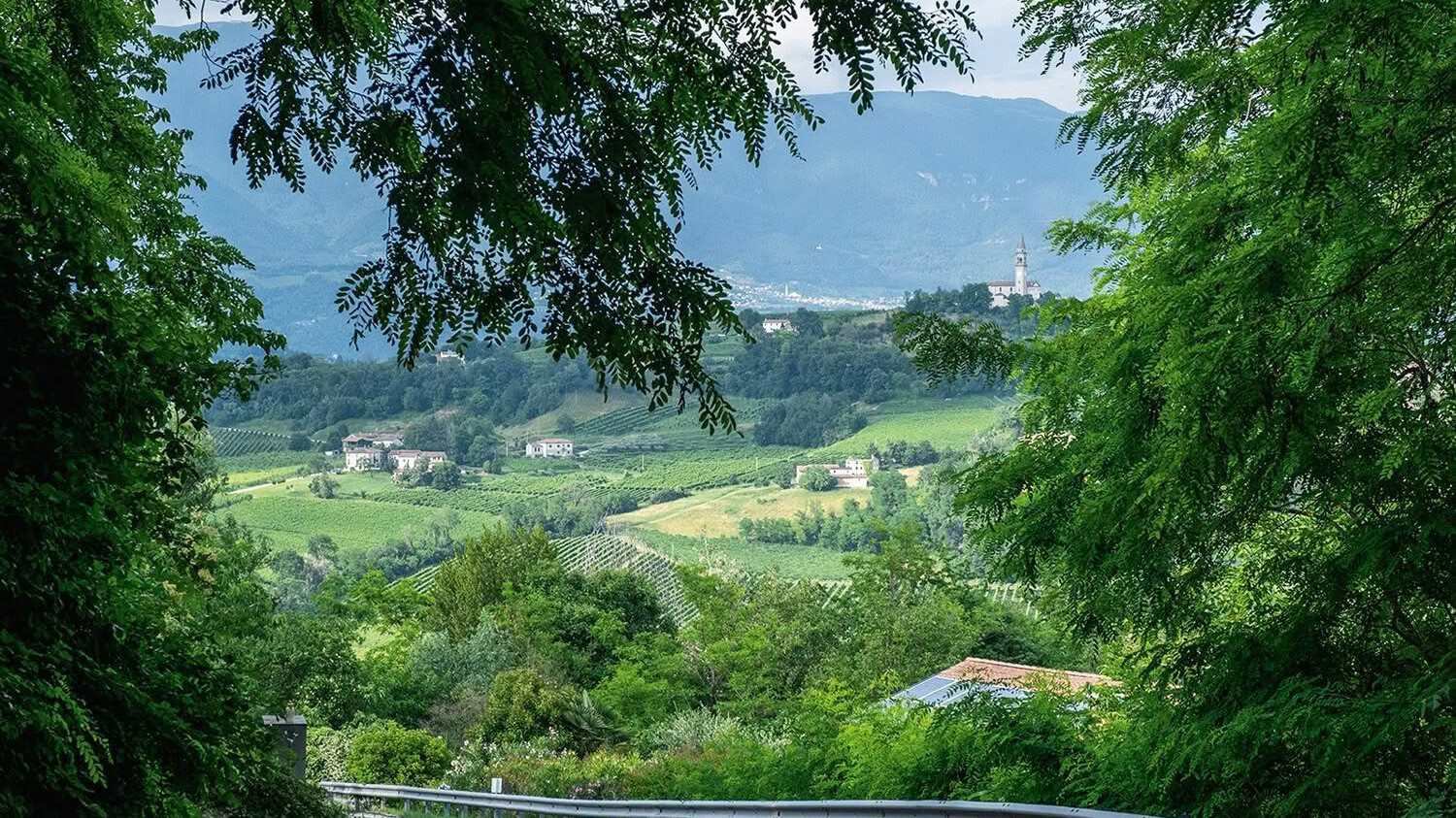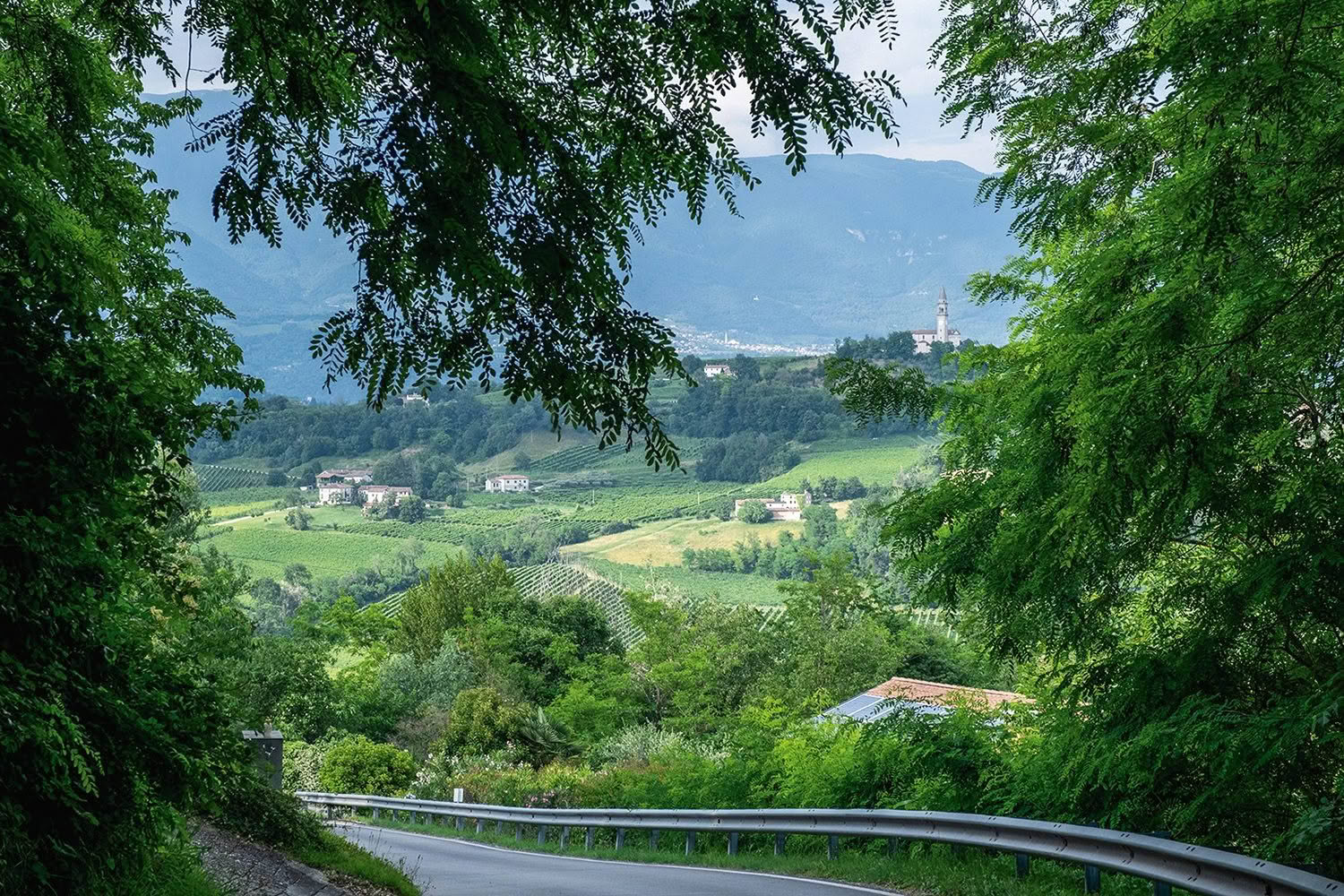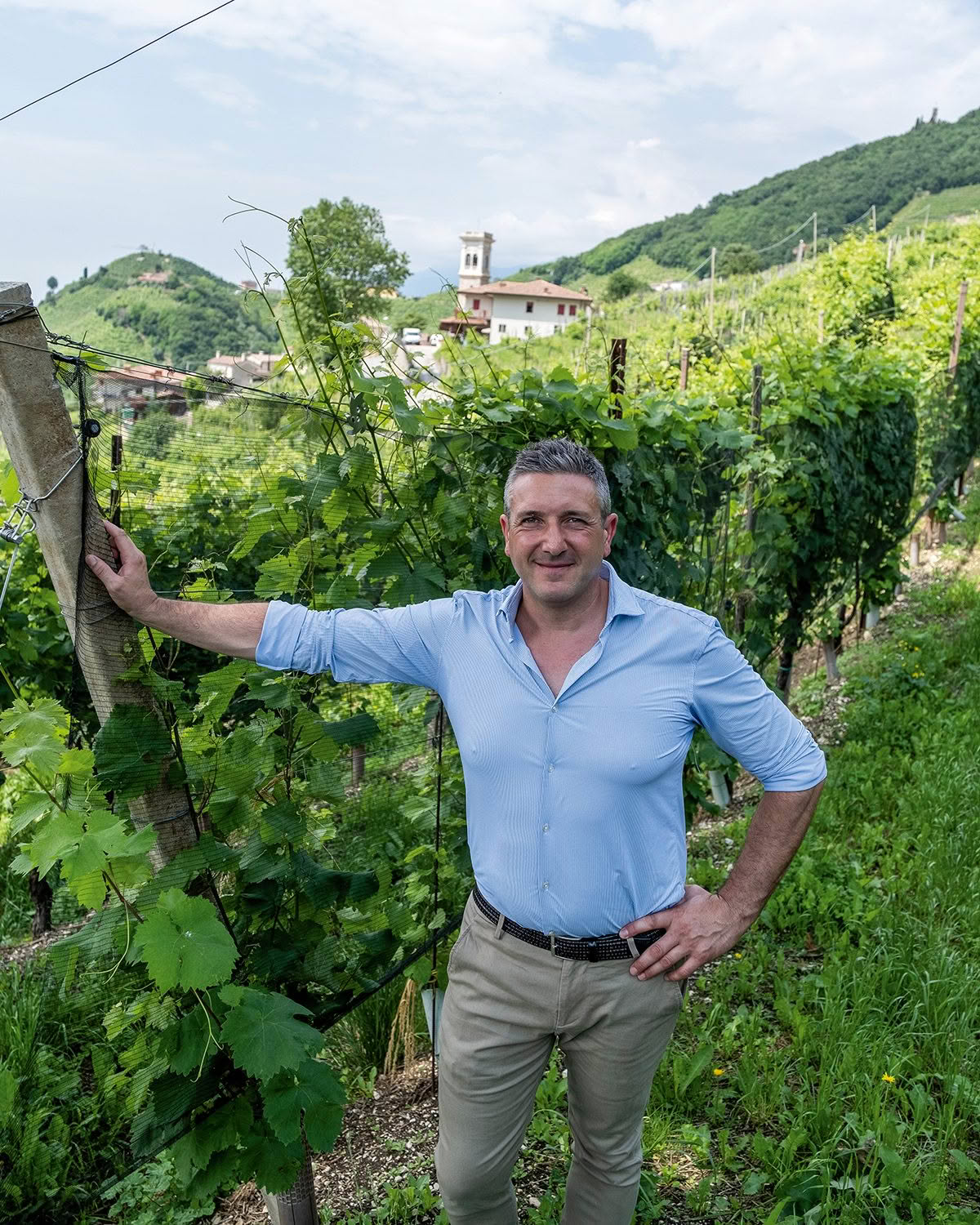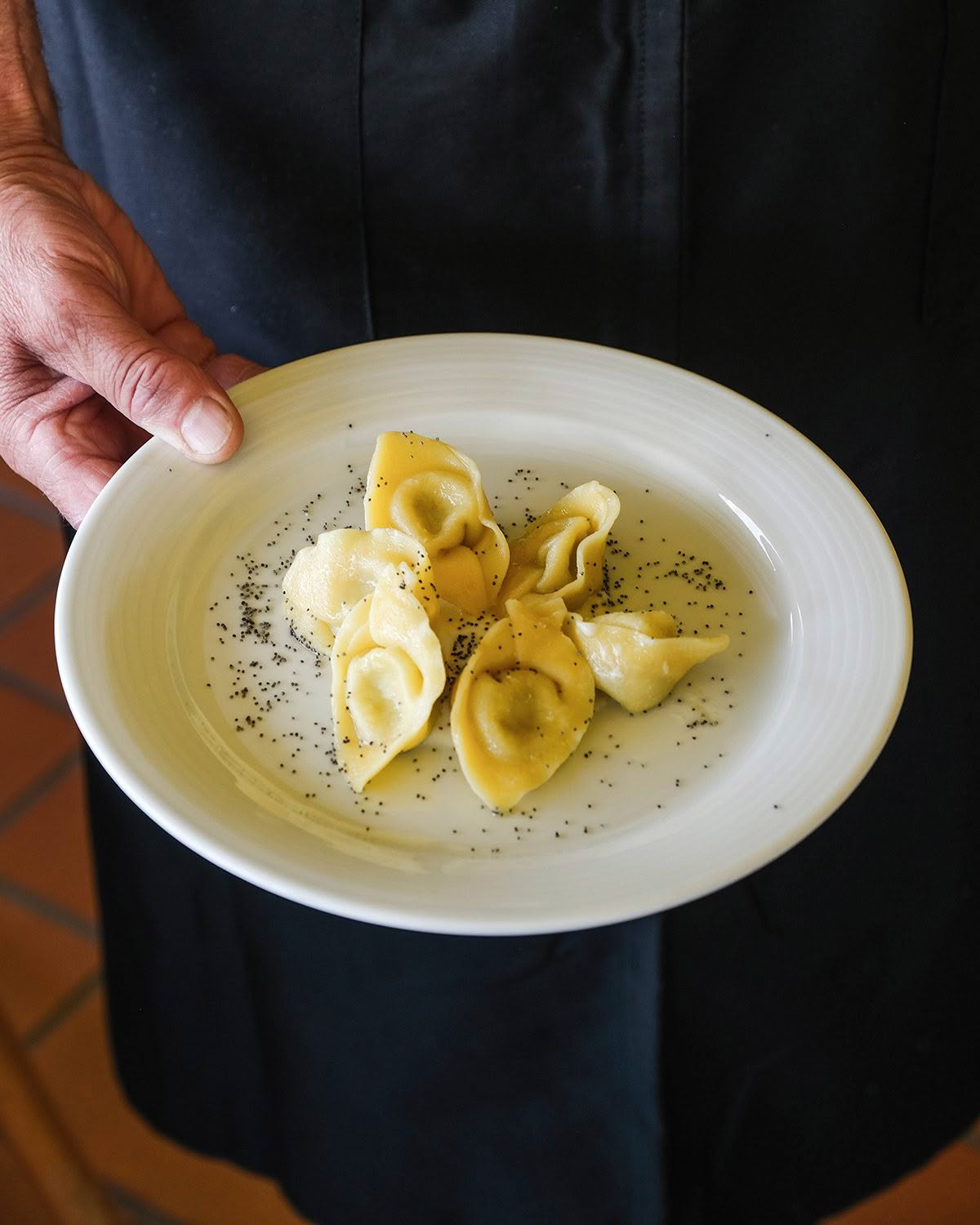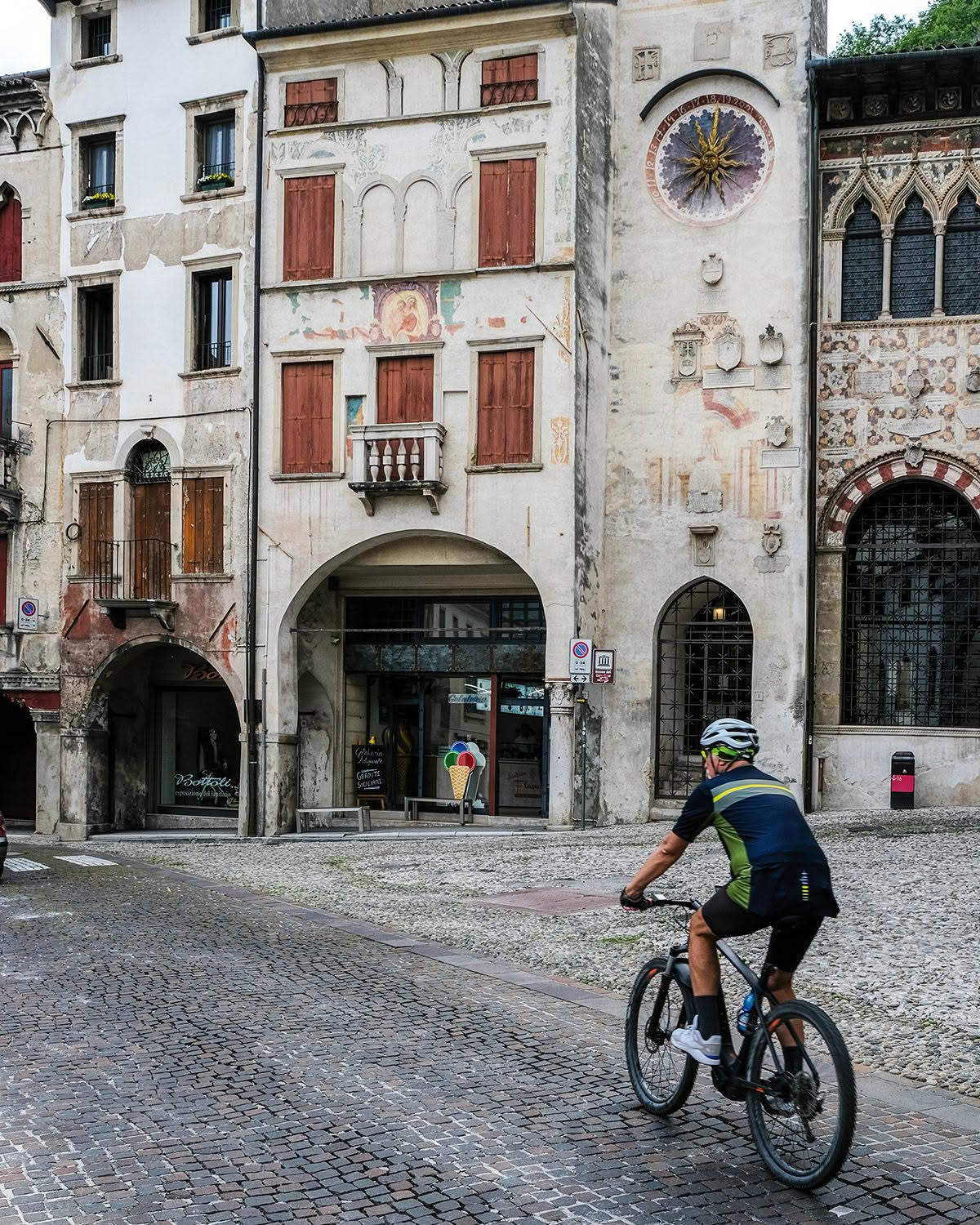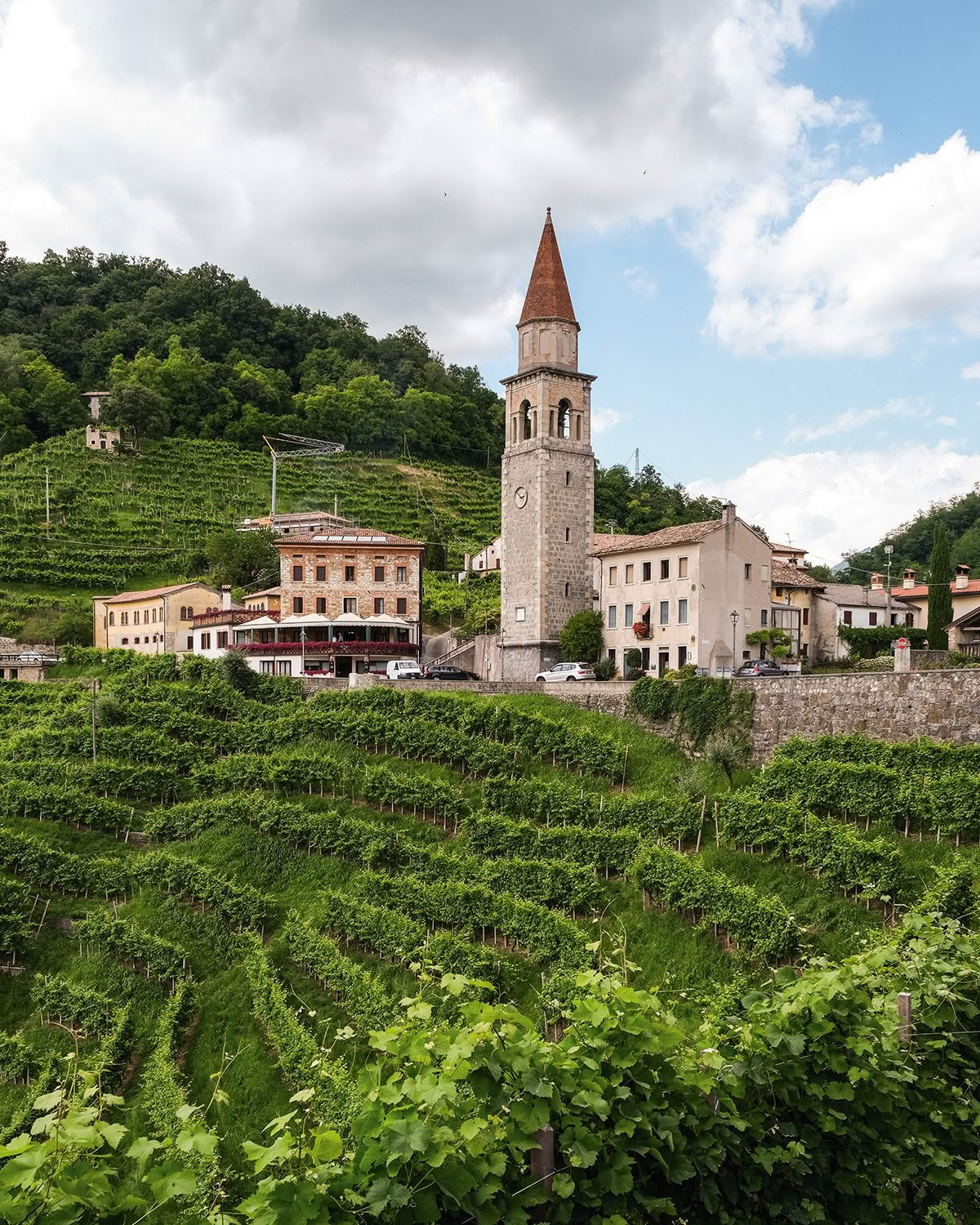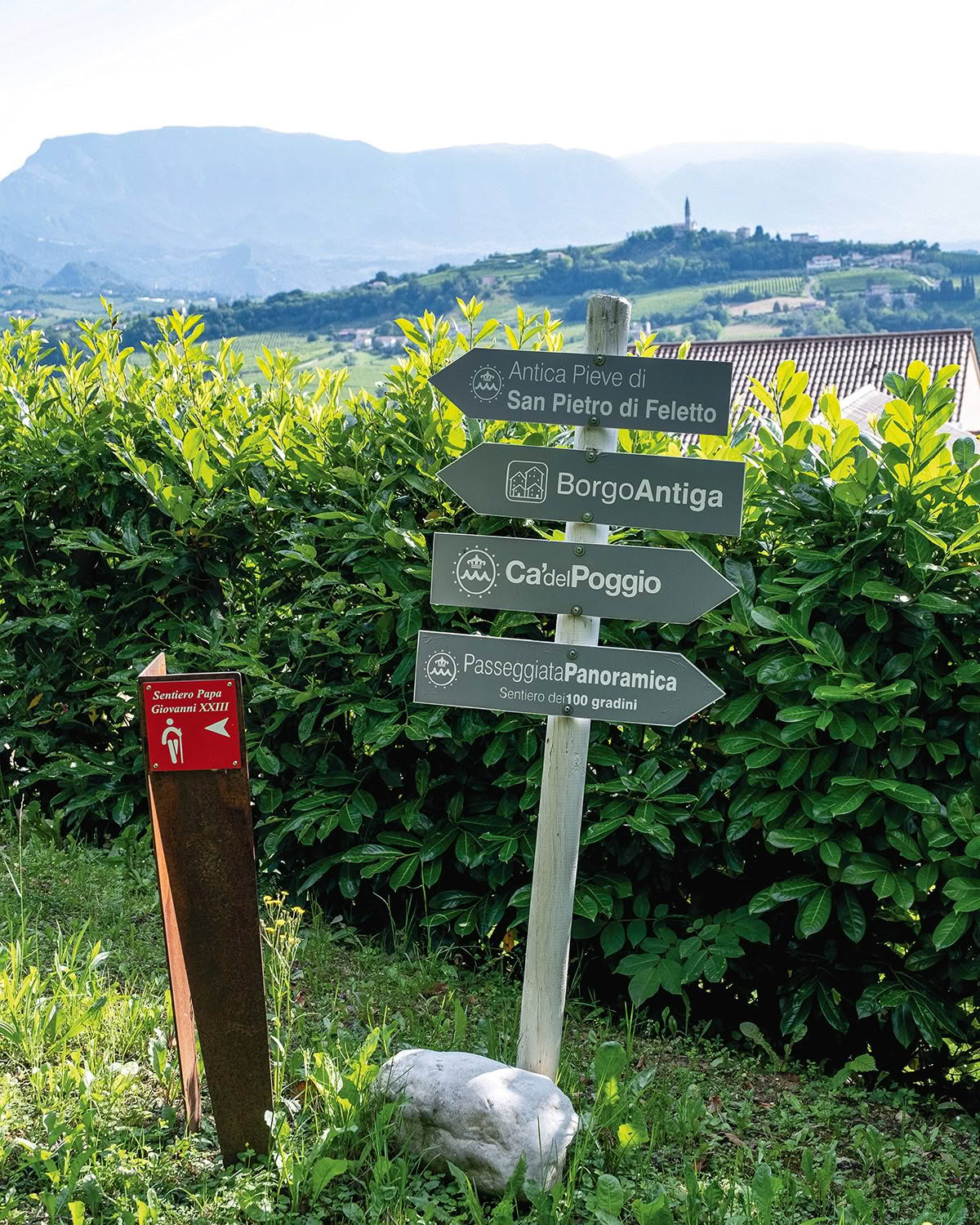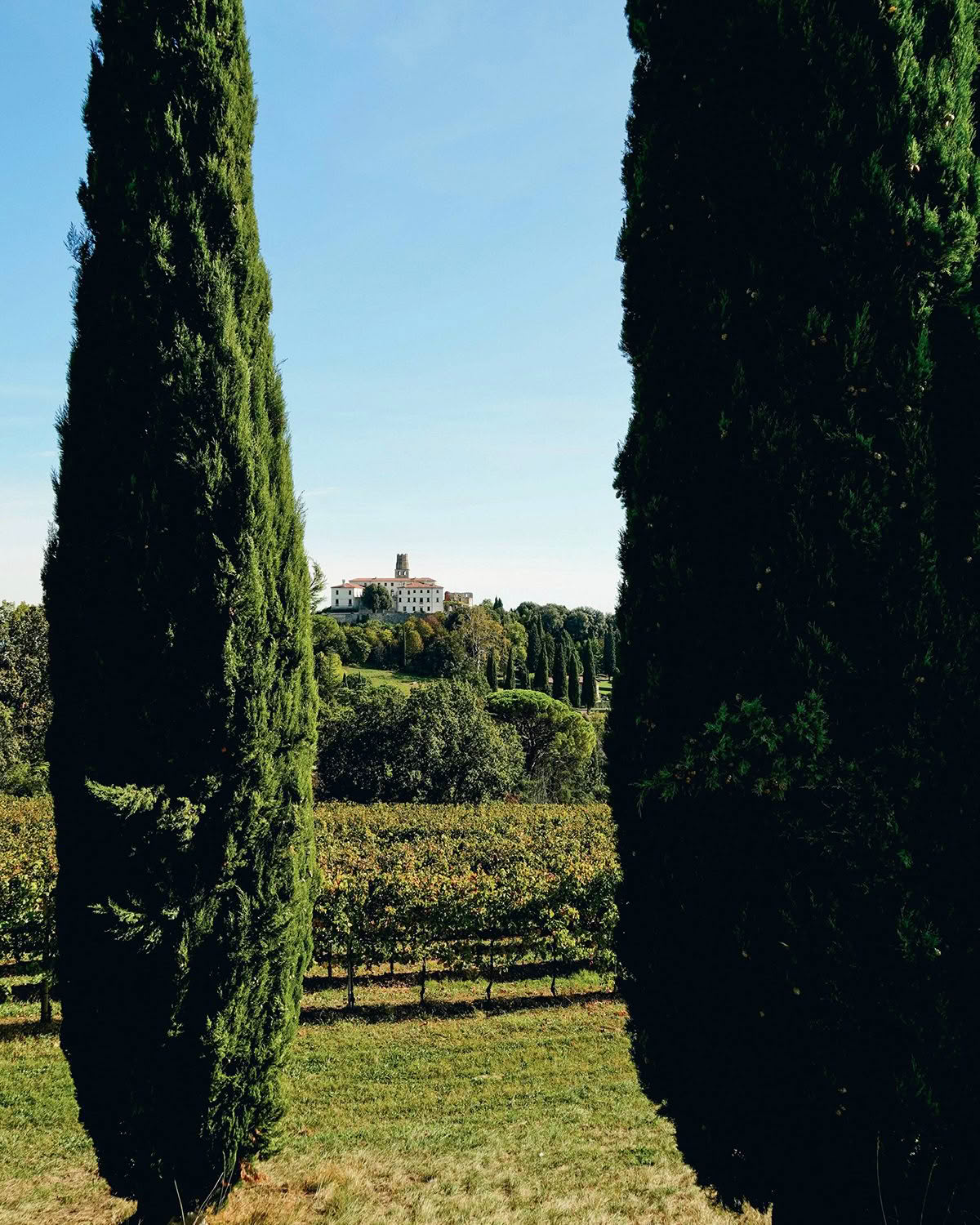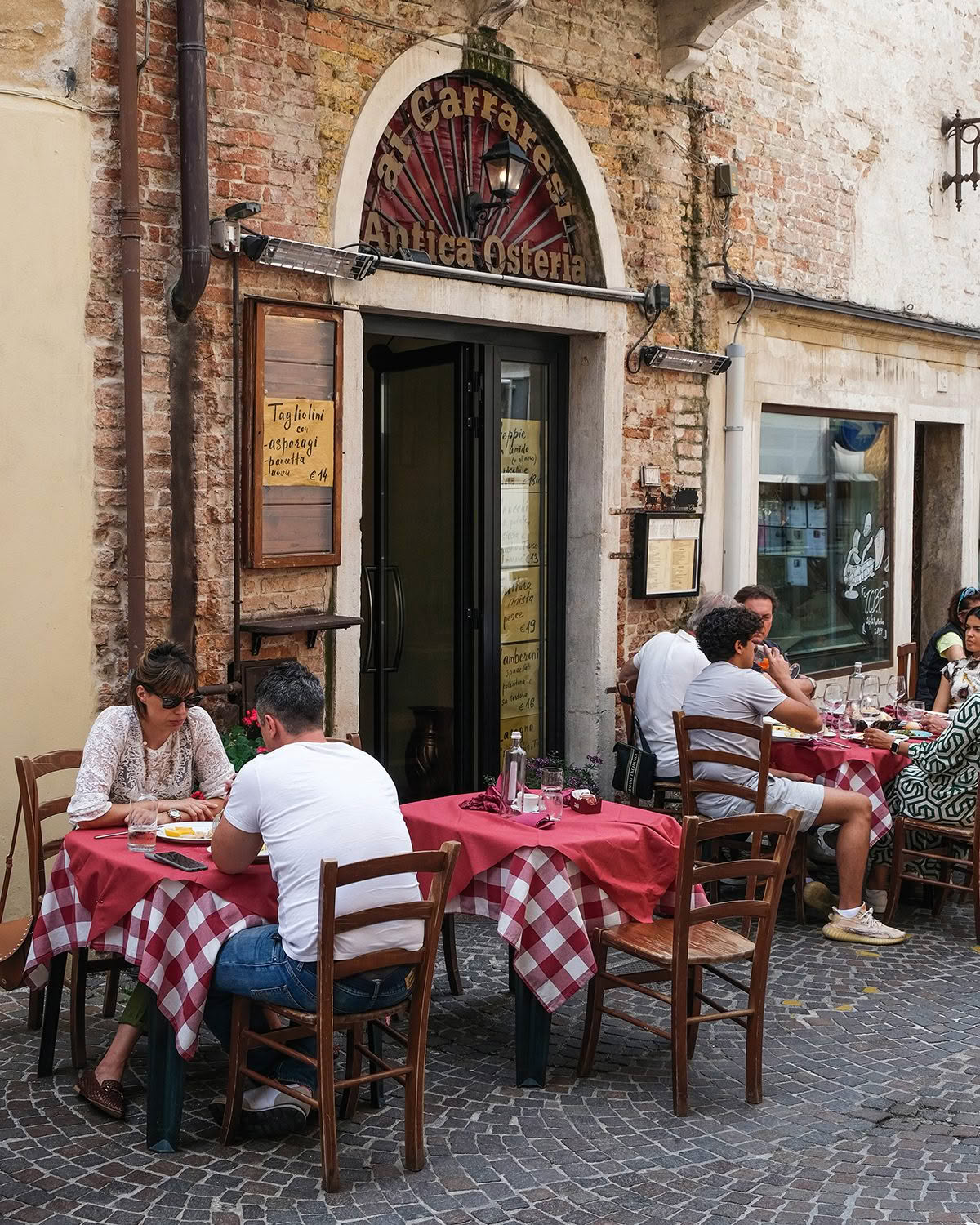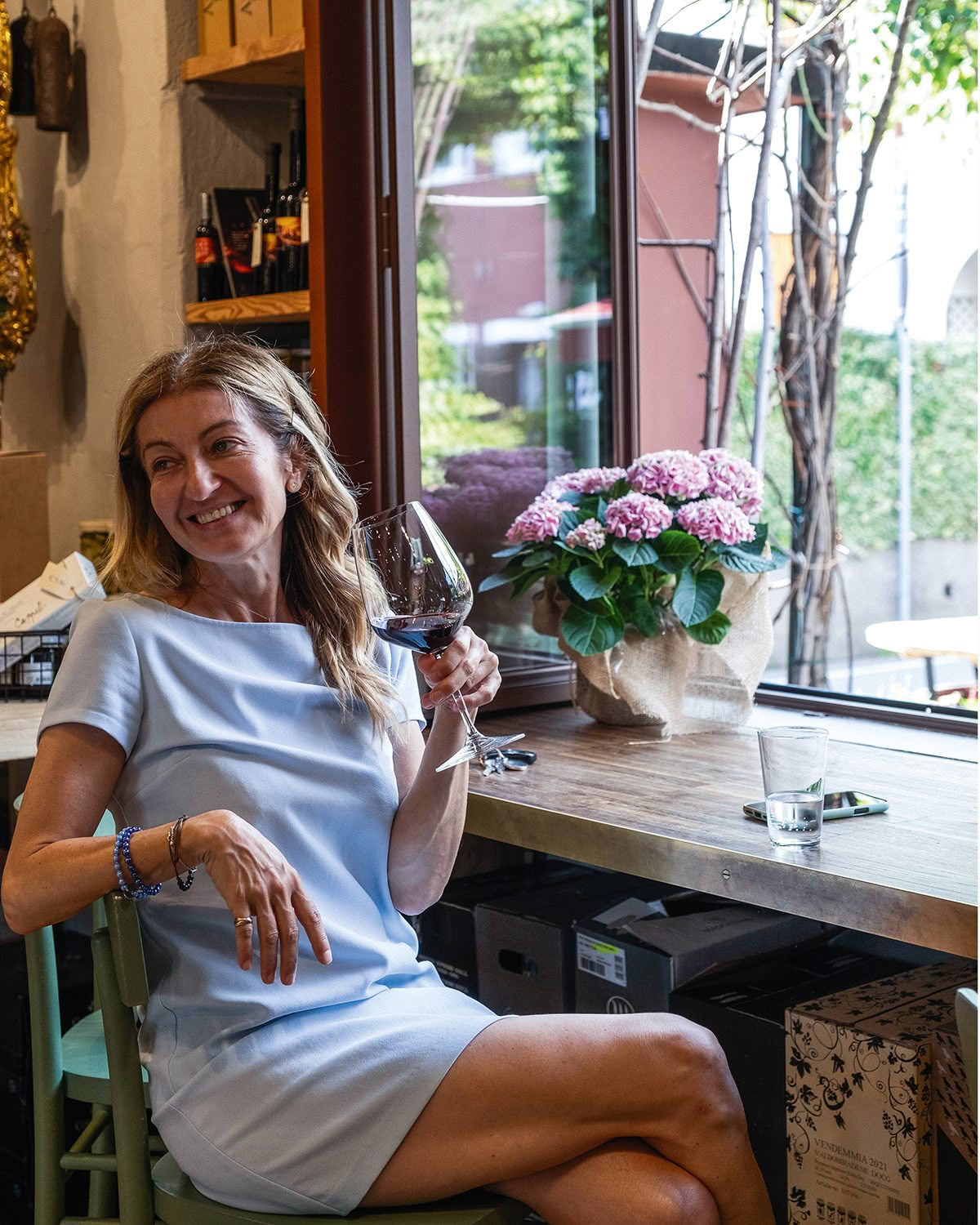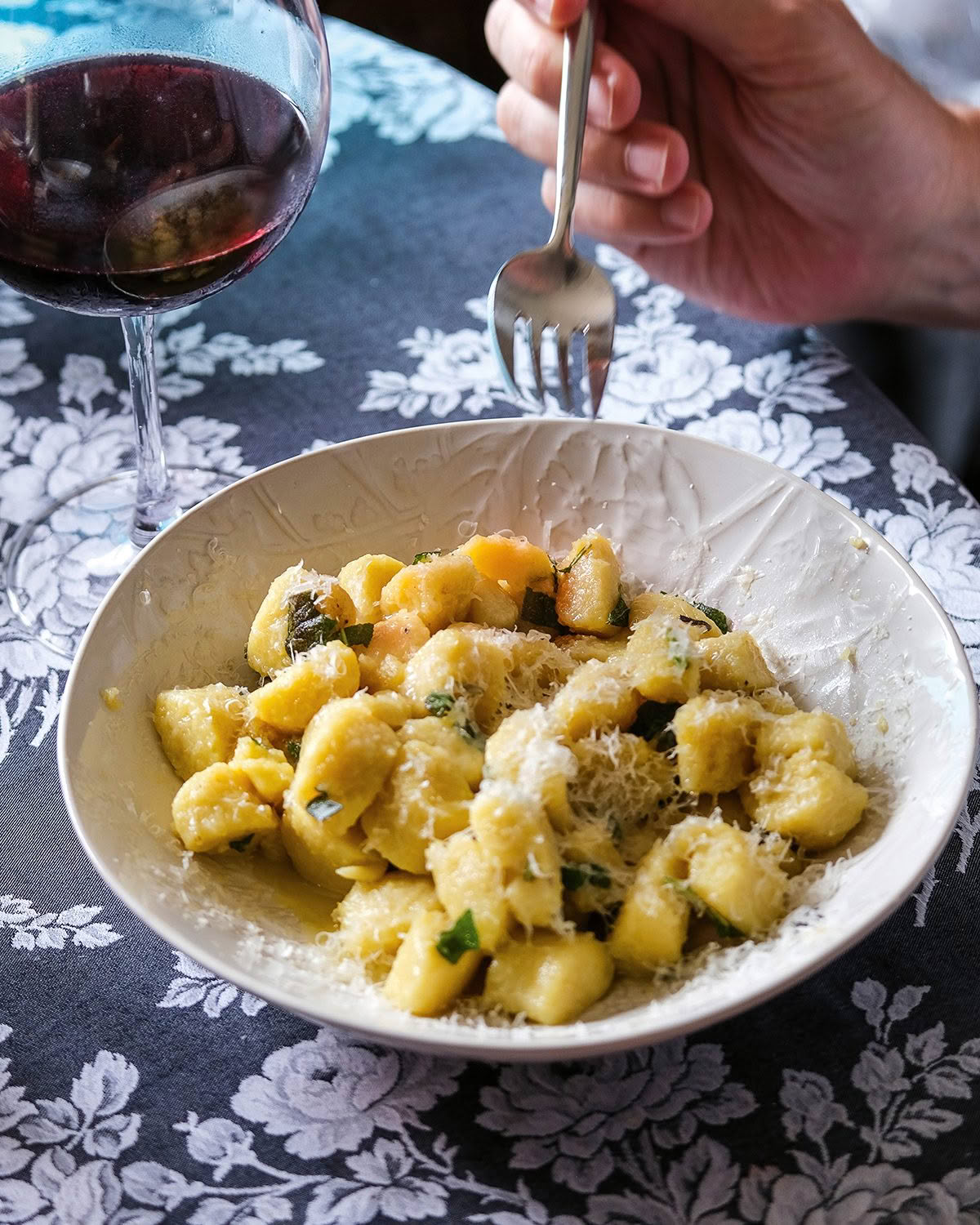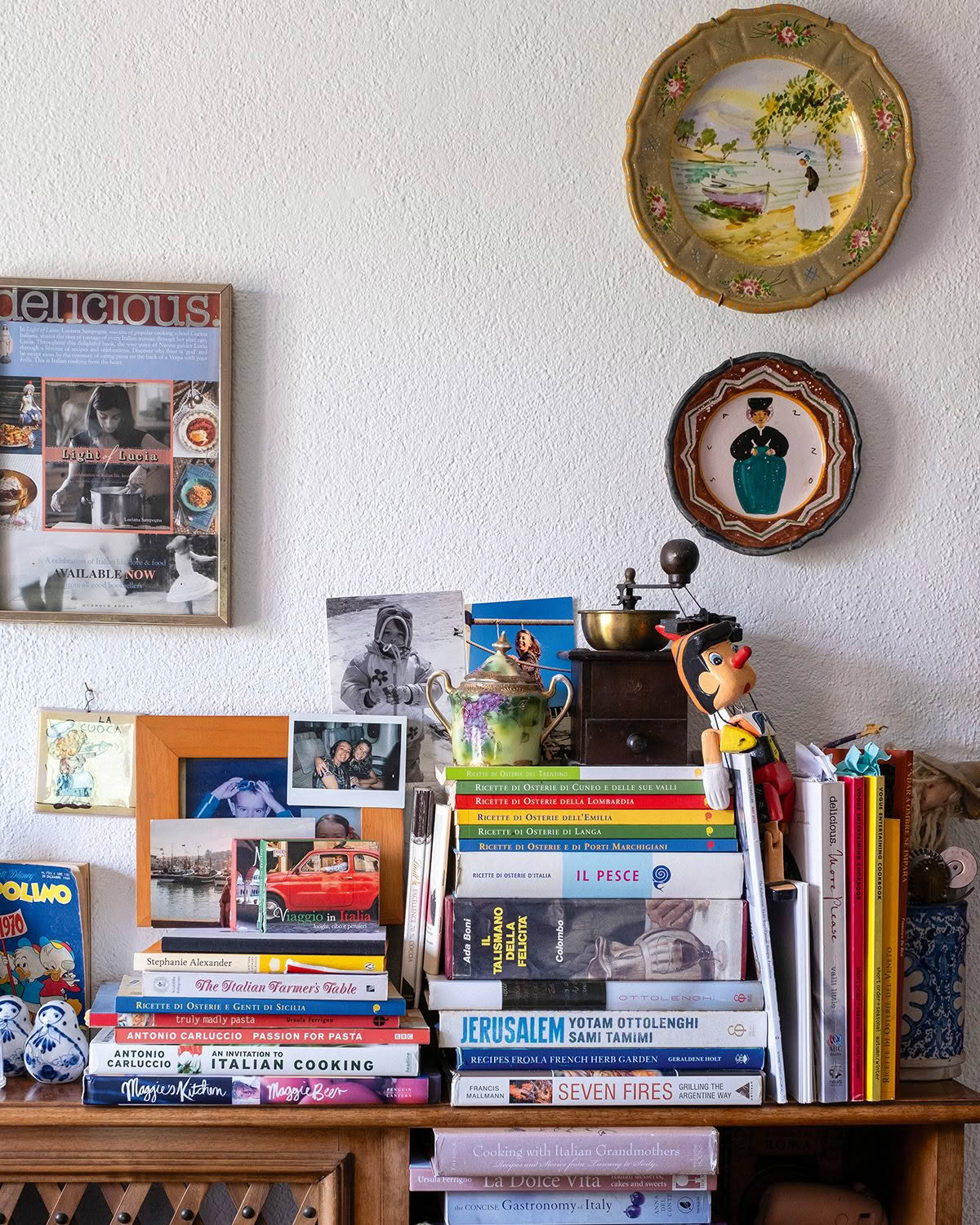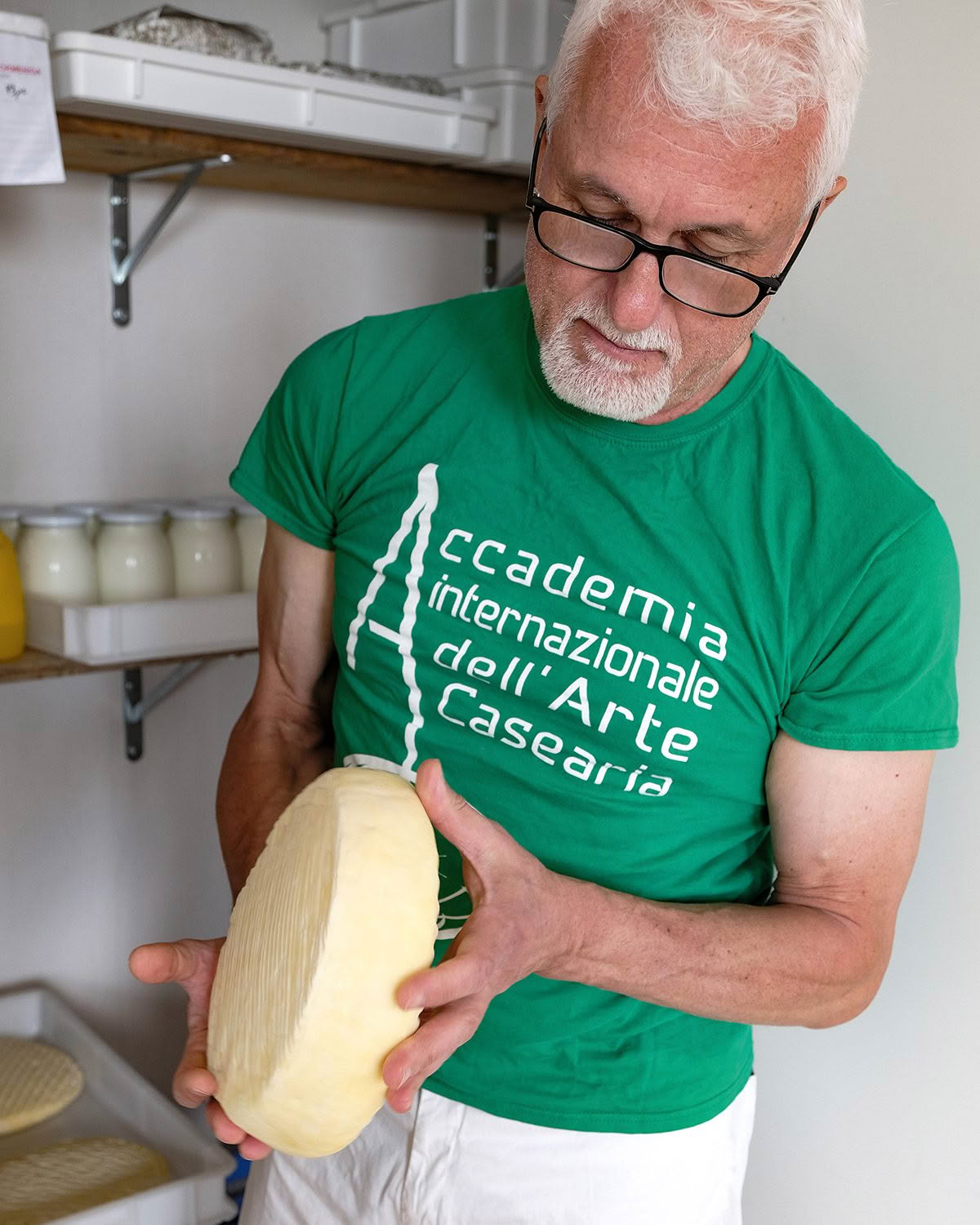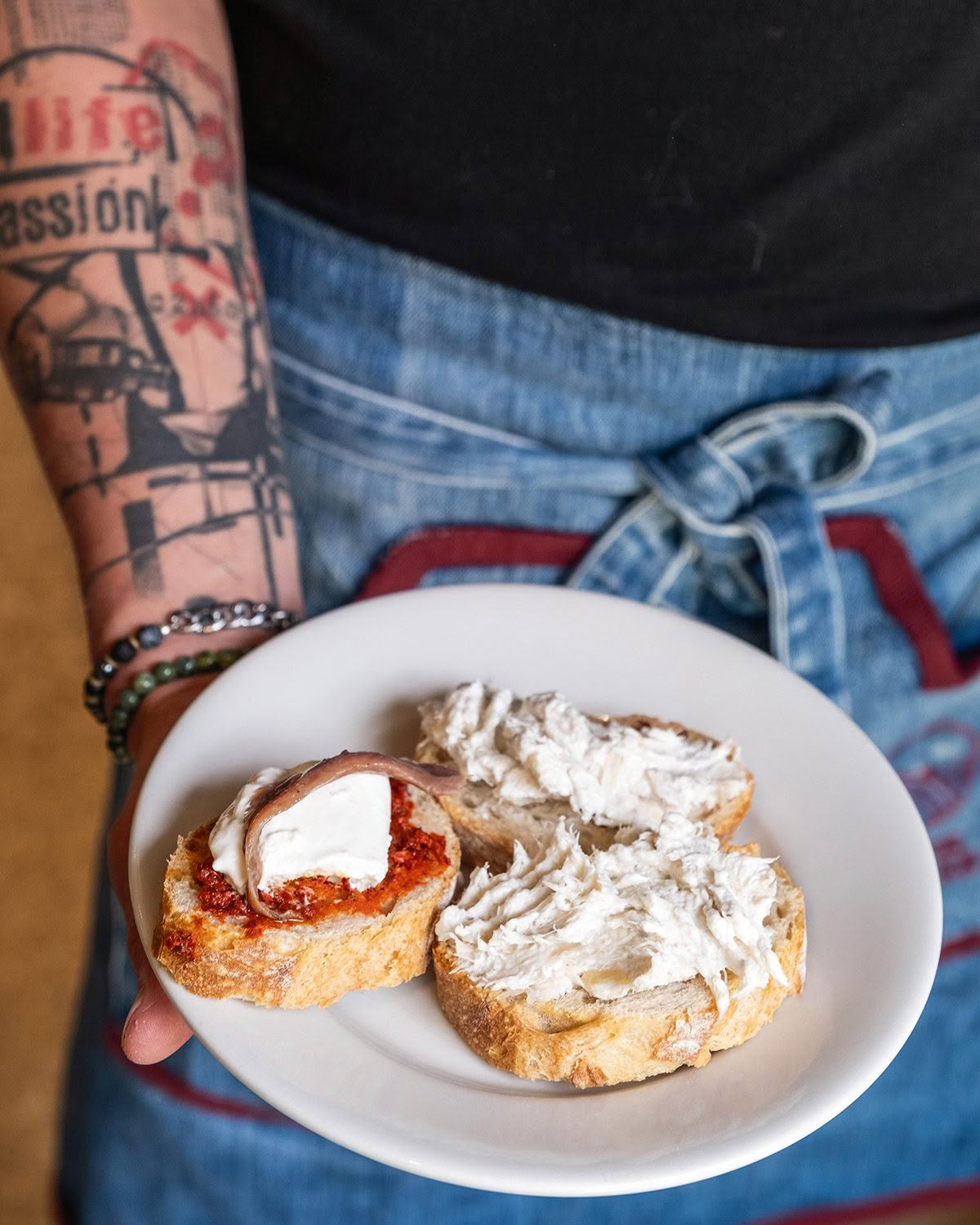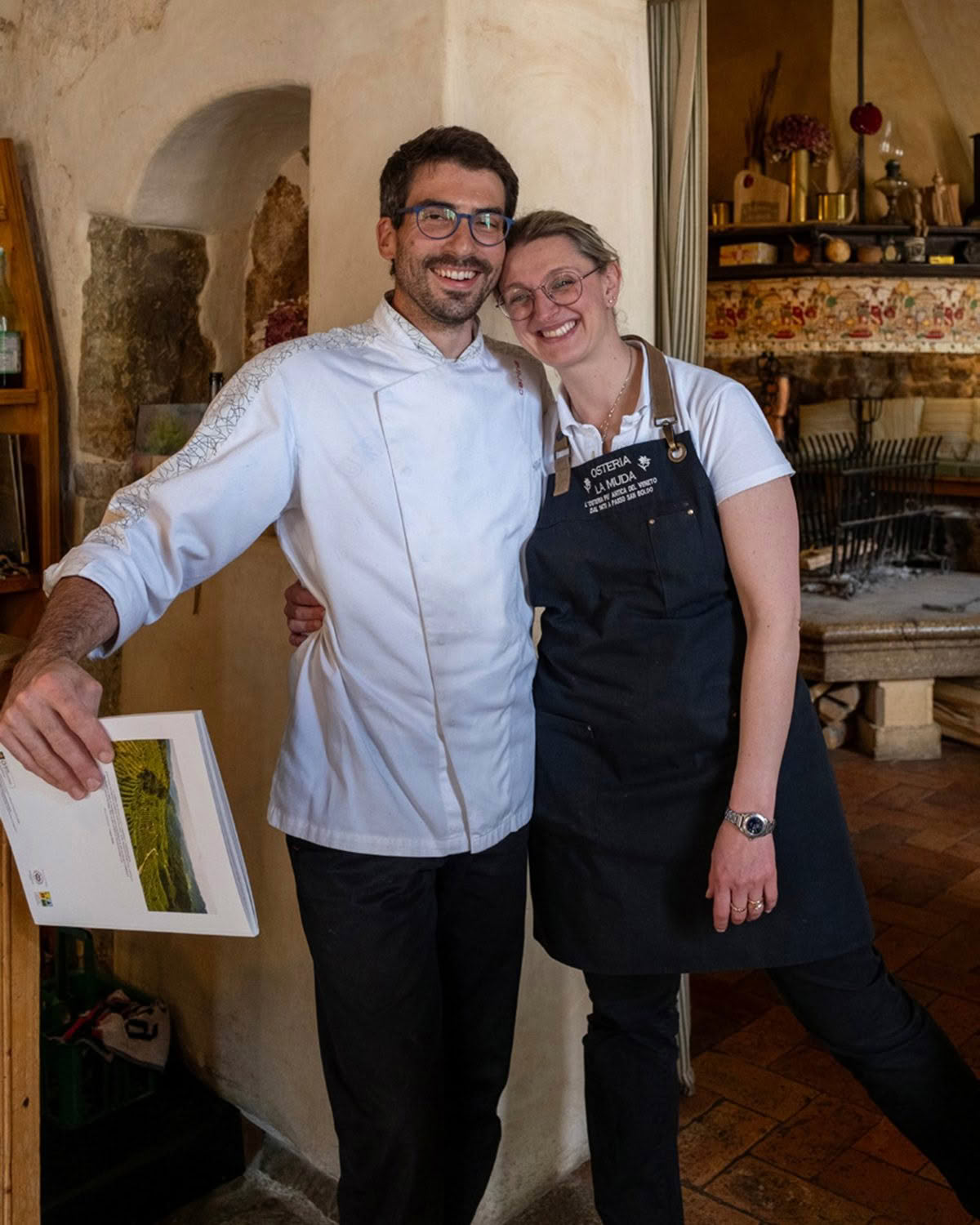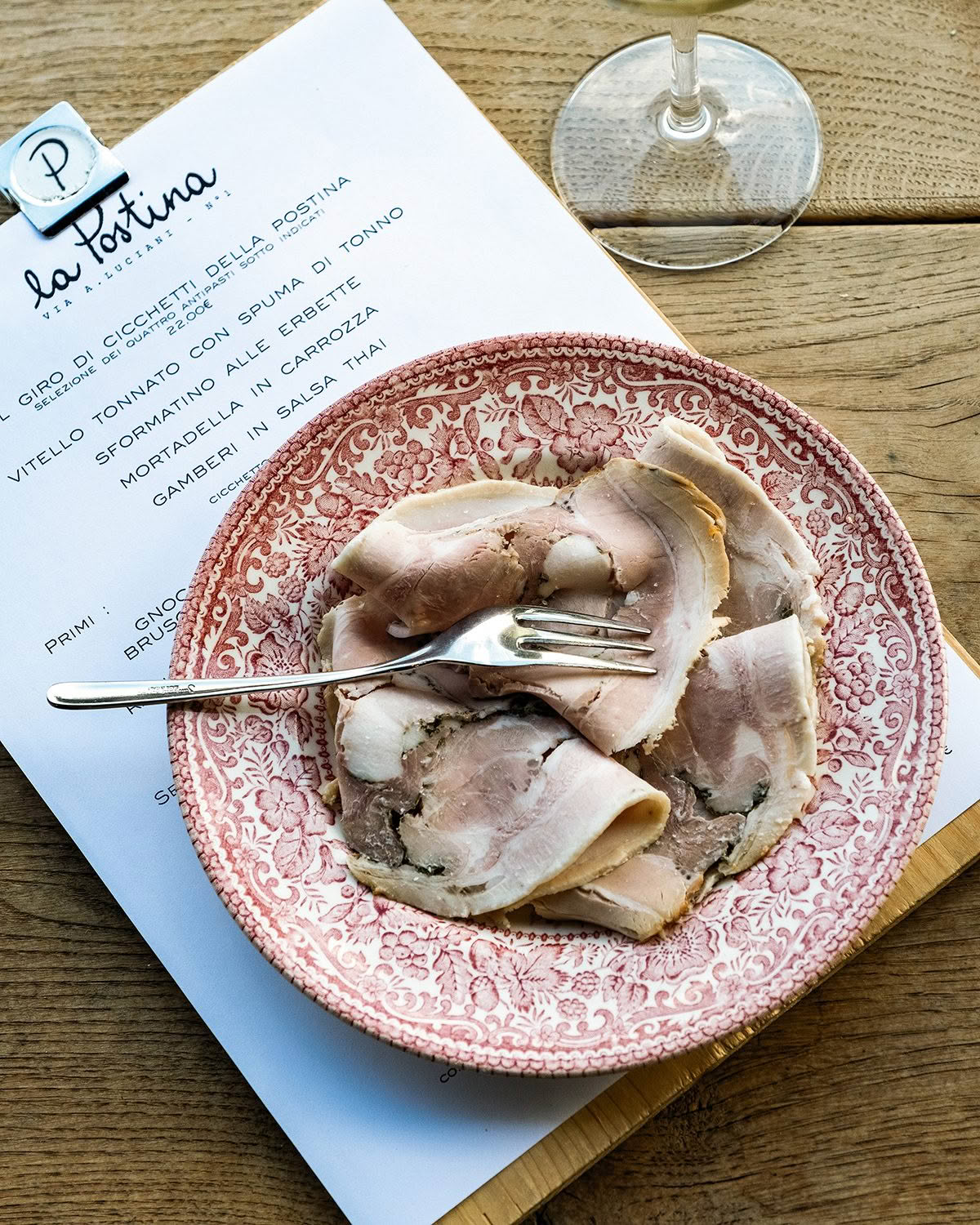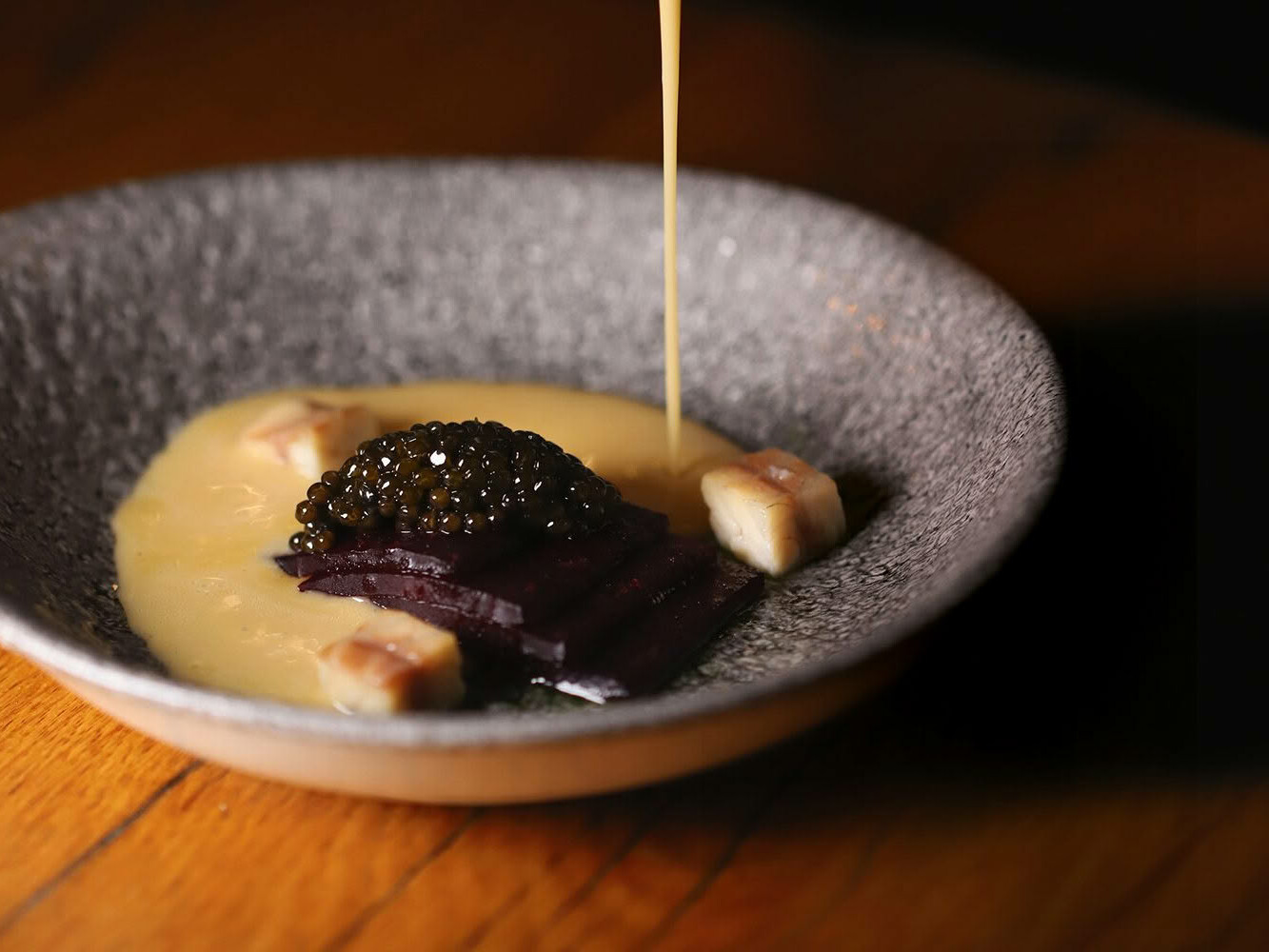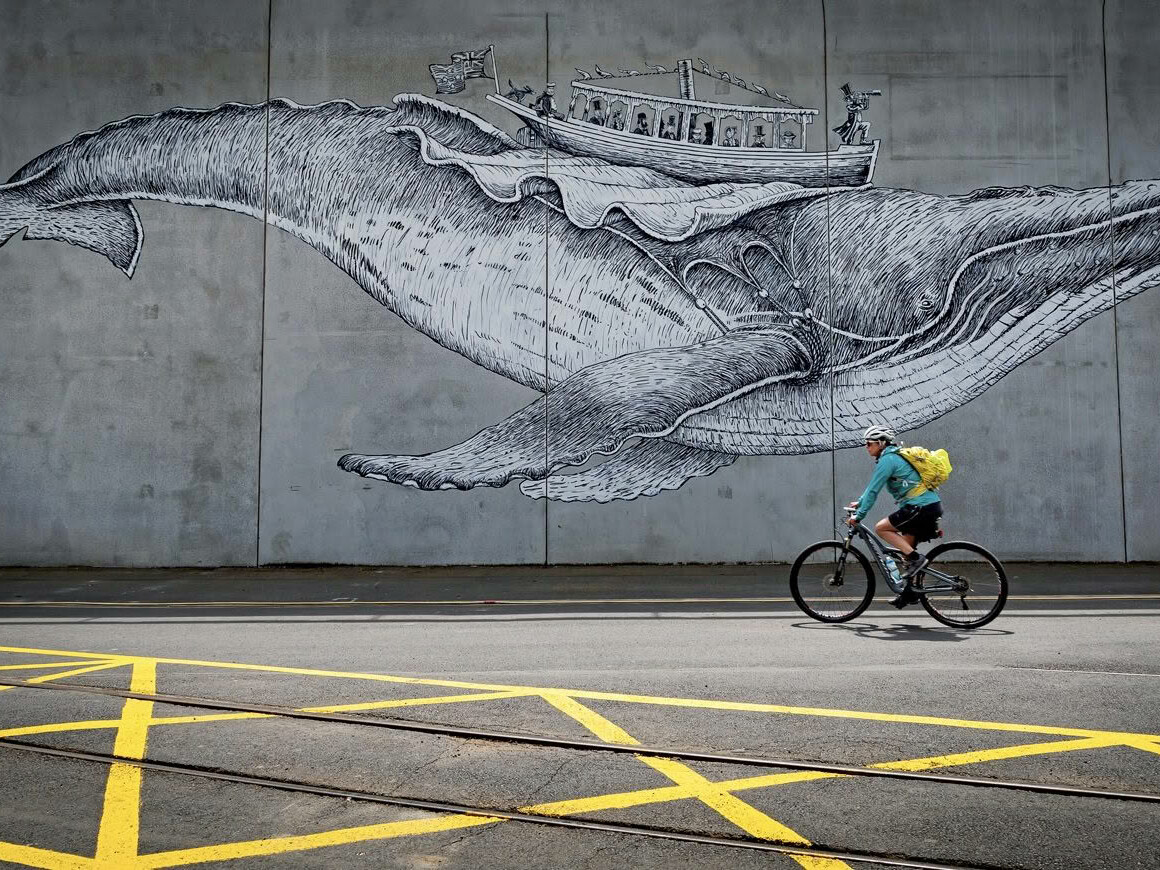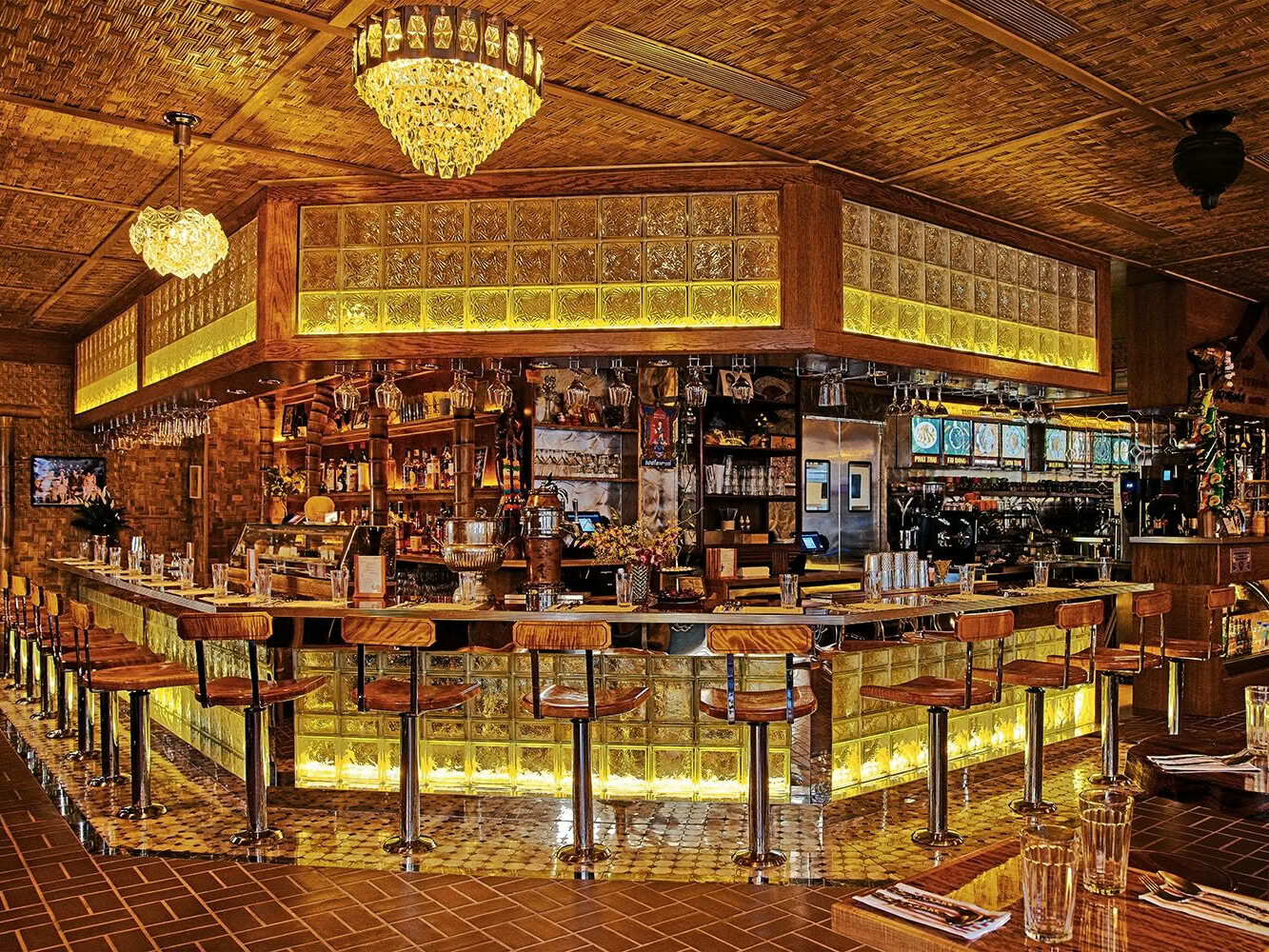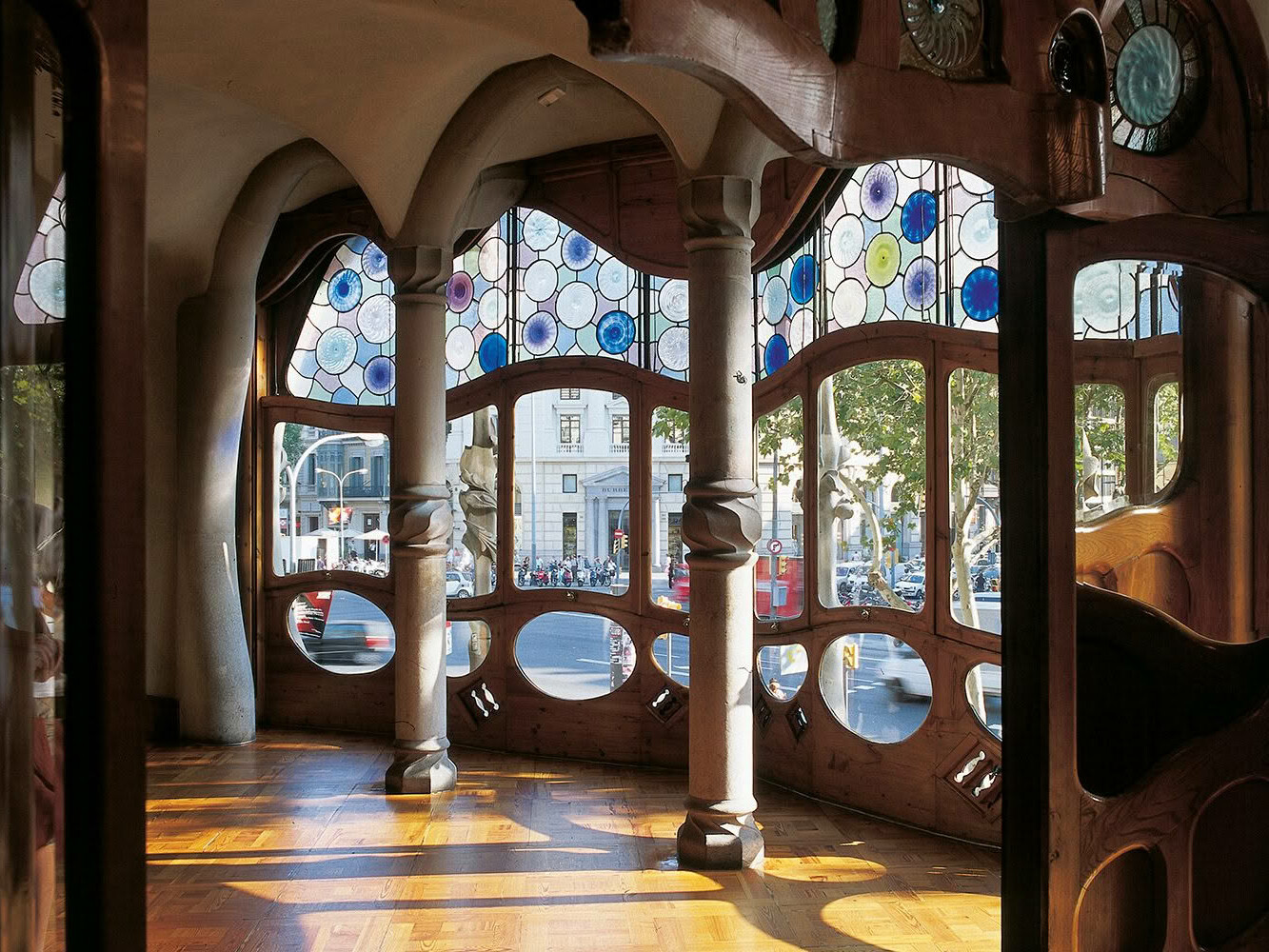I generally don’t approve of travel as performance art, but I can’t resist posting to Facebook the minute I arrive in the Veneto: “Currently, I’m stuck inside a postcard. Do not send help. Repeat. Do. Not. Send. Help.” I’m in the tiny hamlet of San Pietro di Feletto near Treviso, at the invitation of cookbook author and local food expert Luciana Sampogna. As far as the eye can see are bucolic hills terraced with small plots of vines; called ciglioni, they create a manicured green patchwork that hugs the undulations of the land. The vista from Luciana’s charming home – where she teaches local dishes and offers some accommodation – looks positively art-directed, complete with church spires, historic towns, pink, Titian-esque cloud puffs at either end of the day and a soaring Dolomite backdrop – when it’s clear you can even see Venice, about 60km to the south. Although she periodically returns to Sydney to teach at the city’s Cucina Italiana cooking school, Luciana essentially wound up her Antipodean life during the Covid pandemic, landed in this ridiculously gorgeous corner of Europe, and isn’t looking back.
The area she chose is the Colline del Prosecco di Conegliano e Valdobbiadene, or the Prosecco Hills. Declared a UNESCO World Heritage site in 2019 to preserve its ecology, architecture, cultural traditions and biodiversity, it’s a curated landscape that’s steeped in centuries of viticulture and sharecropping. If that sounds a bit weighty, once you visit you really ‘feel’ it. There’s palpable pride in this land and its famous fizz; it’s the flag of the Venetian Republic, not Il Tricolore, that flutters in the breeze after all. With the vineyards mostly small and family-owned – some going back generations – the sense of connectedness runs deep.
Swathes of Veneto and neighbouring Friuli Venezia Giulia produce DOC (Denominazione di Origine Controllata, or ‘Controlled Designation of Origin’) prosecco, accounting for the majority of overall wine production. But the small patch accessed by the Strada del Prosecco, tracking a picturesque loop between the towns of Conegliano and Valdobbiadene, attracts the highest quality designation – DOCG, the G for ‘e Garantita’. Above prosecco DOCG on the quality pyramid are two exalted sub-designations – rive and cartizze. Rive prosecco is hand-harvested from 43 small, certified areas characterised by steep, exposed slopes with varying local microclimates; ‘rive’ refers to the precipitous hillsides. The term was adopted in 2009 to more clearly define quality differences within the region and to recognise the diversity of terroir. Cartizze, considered the apex of prosecco making, comes from tiny vineyards within a 107 hectare dot of land near Valdobbiadene. The most expensive vineyard property in Italy, it’s also challenging land that requires an estimated 600 hours of manual work per hectare, annually. Alessandro Bortolin, from the vaunted, eponymous winery, explains to me that they describe the wine making around here ‘heroic’, gesturing toward the dizzying gradients of his cartizze vineyards near the hamlet of Santo Stefano. All the work, he says, is done entirely by hand. Stony soil, Adriatic breezes, a mild climate and highly skilled winemaking work their magic to produce refined, sought-after wine that’s the ‘grand cru’ of prosecco. Only 1.2 million bottles of it are made every year and most are consumed in Italy.
Luciana and I explore the area via the 50-odd km long Strada del Prosecco, winding through vineyards, pretty villages and historic landmarks. Beloved by cycling enthusiasts (it’s used for the Giro d’Italia), the road is narrow, twisting and a touch hair-raising as it tracks west of Conegliano. Offering spectacular vistas over sheer drops, it makes me think that if the wine making around here might require heroism then so does the driving. To get the most out of the area you really need a car, but if you’re not up for it there’s a tourist bus working the route in summer months, with 22 stops on its circuit.
Small wineries line the route, revealing cellar doors that can be charmingly informal. You might have to holler to summon a producer from their vine tending in order to taste, as Luciana and I do when we visit her friend and supplier Franco Colvendra at La Reggenza near Refrontolo. Ambling into the tasting room from pruning, he wipes his hands to pour glasses of elegant DOCG Extra Dry, slicing some unpasteurised montasio cheese and discs of porky sopressa to go alongside. There’s excellent prosecco everywhere, with great hospitality (and snacks!) to match.
You needn’t be an oenophile to fall for this part of the world, however. Attractions in the Veneto hinterland might be low-key but neither are they overrun – proximity to Venice puts paid to that. Refreshingly absent are large tour groups, with the majority of visitors seeming to be cycling fanatics or well-heeled self-drivers from nearby Germany and Austria. Of the old towns, one of Luciana’s favourites is tiny Rolle, perched high and described by the Italian poet Andrea Zanzotto as “a postcard sent by the Gods”. Serravalle in Vittoria Veneto has one of the region’s best-preserved town centres and it’s not hard to fall for its gorgeous Piazza Flaminio, a confection of porticos and Renaissance-era painted facades. I run out of time for Asolo, renowned for its dreamy historic centre, and Bassano del Grappa, another dazzler in an idyllic setting that’s famous for grappa distilleries. “Next time,” Luciana promises me over a plate of her faultless, buttery polenta, hand-stirred for over 20 minutes in a paiolo, the traditional heavy copper bowl used just to make polenta. The accompanying pork-cheek braise? It’s gorgeous but almost incidental, her silky polenta is that good.
There’s plenty for culture buffs in the region, who won’t want to miss sights such as the atmospheric 12th century Abbey of Santa Maria in Follina, or the Romanesque-style church in San Pietro di Feletto, adorned with pastel frescoes some 600 years old. When Luciana and I visit, they’re both blissfully empty. I loved ambling around the atmospheric old core of Conegliano, home to the famous Renaissance artist of the same name. A spritz-fuelled al fresco lunch at Bar Ristorante Al Castello, right by the town’s imposing medieval castle and a favourite spot of Luciana’s, proves a brilliant finale to my Prosecco Hills visit.
It’s a hard region to leave, the beauty and peacefulness seductive, and Luciana’s hospitality, regularly lubricated with glasses of prosecco, is warm. I’m amazed how quickly I’ve slipped into the unhurried, time-is-an-artificial-construct sensibility that’s the local modus operandi. But physically leaving is actually very straightforward and has me wondering why more travellers don’t venture here. After an hour’s smooth train ride from Conegliano, I’m disembarking at Santa Lucia station in Venice and back amidst the tourist frenzy. It’s that close. And that easy.
LUCIANA’S BLACK BOOK
STAY
Sleep among the hills at peaceful Il Municipio, enjoy four-star amenities at Ca’ del Poggio, soak up family-style comfort at Agriturismo Ca’ Borgh, or sleep in Luciana’s apartment, then take a cooking class.
municipio1815.it
cadelpoggio.it/en
caborgh.it
collinediluce.it/prodotto/cooking-classes
MAKE CHEESE
Book a day learning to make a range of artisanal cheeses with expert Carlo Piccoli in San Pietro di Feletto. Grigio Alpino cows, each with a bell and a name, munch grass right outside. accademiacasearia.com/academy/
WALK A WHILE
The area’s many trails and hikes are the ideal way to slow down and appreciate the stunning surrounds. The Pope John XXIII Path, an easy 4.2km amble through vineyards and gentle wooded slopes around San Pietro di Feletto, was a favourite of its namesake and is easy to access. Need a guide? Luciana’s friend Sebastien Bellet, whose local knowledge is encyclopaedic, is brilliant (+39 348 549 1068).
EAT WHERE THE LOCALS EAT
Expect risotto, polenta, pasta, spiedo (skewered roast meat), fish and game dishes. Try La Postina for elevated fare and a fun vibe, Osteria Antica Guizza for an extensive wine offering and good ciccetti, and family-run Andreetta for exemplary home-made fare and gorgeous views. Osteria La Muda dating from 1470, sits atop of the spectacular San Boldo pass and the drive up is incredible, while Due di Coppe is a hidden gem in Valdobbiadene.
lapostinaal1.com
osteriaguizza.it
andreetta.it
lamudadisanboldo.it
facebook.com/duedicoppebistro
SIP AT THE CANTINE
So many cellar doors, so little time. Cut to the chase with Luciana’s personal selection of favourites.
Alessandro Bortolin alessandrobortolin.com
Col Vetoraz colvetoraz.it
La Reggenza vinilareggenza.it
Le Manzane lemanzane.com
Moretvini moretvini.it
Il Colle proseccoilcolle.it
Iris Vigneti irisvigneti.it
The writer travelled courtesy of the Colline di Luce.
SEE MORE FROM CUISINE
Suculent where the sauce is the soul
As in any thriving city, hotspots come and go and with so much to…

